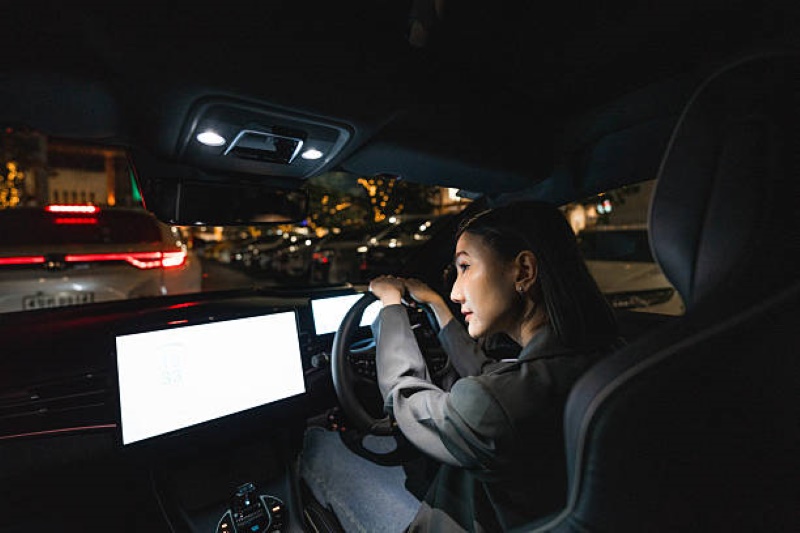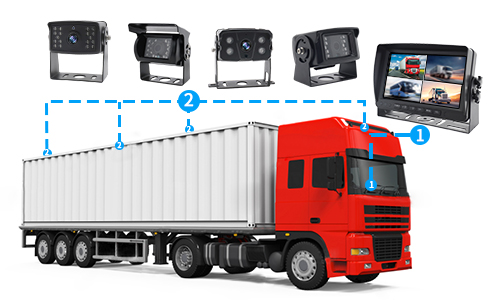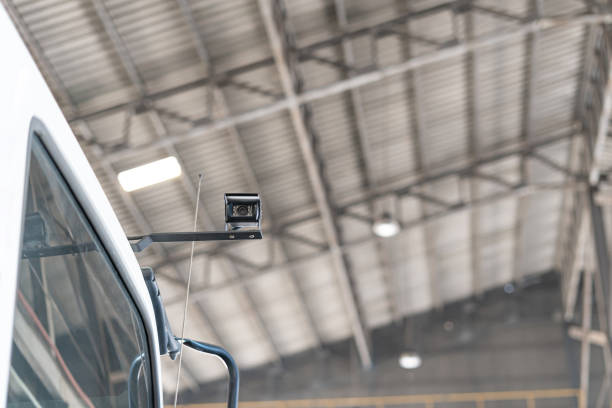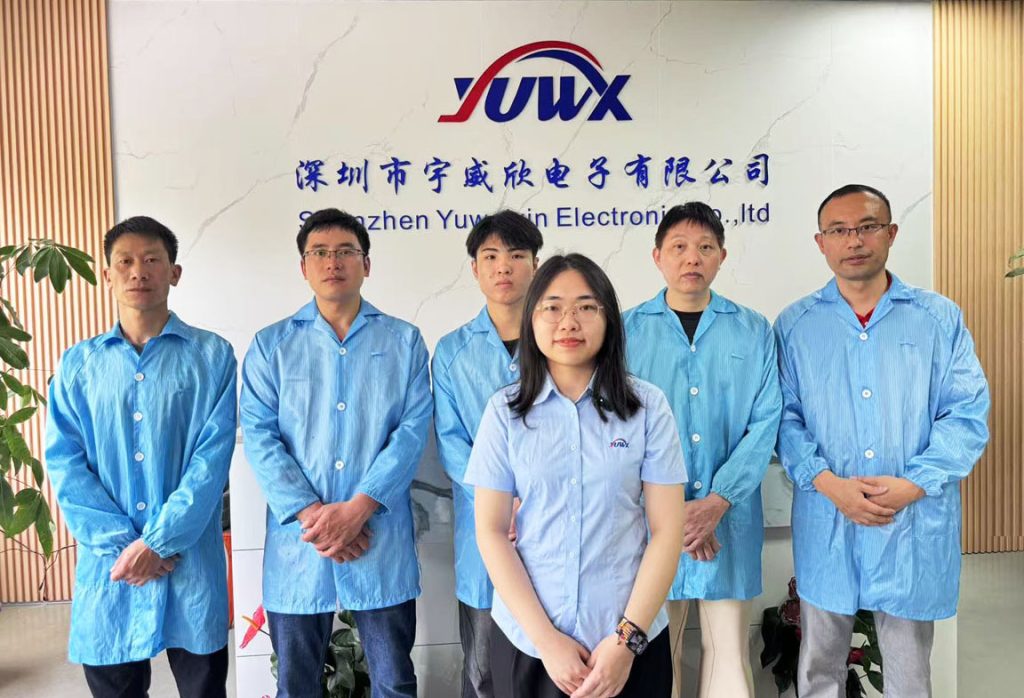In the era of intelligent transportation, modern car rear monitors play an essential role in improving driver awareness and vehicle safety. These monitors have evolved from simple reversing aids to advanced visual systems integrated with multiple sensors and cameras. Among all design features, the wide viewing angle has become a critical factor that defines how effectively a driver perceives their surroundings.
With the increasing density of urban traffic, narrow parking spaces, and growing emphasis on accident prevention, visibility from every direction has become indispensable. A monitor’s field of view determines how much of the surrounding environment can be displayed, reducing blind spots and enhancing real-time decision-making. Therefore, wide viewing angles are no longer optional—they are a fundamental component of safe and efficient driving experiences.
 Why Viewing Angle Matters in Rear Monitors
Why Viewing Angle Matters in Rear Monitors
A wide viewing angle ensures that images displayed on the monitor remain clear and consistent even when viewed from different positions. In real-world driving, drivers seldom look directly at the monitor; they often view it at an angle while simultaneously observing mirrors and surroundings. A narrow-angle display can distort colors, reduce brightness, or obscure critical details when viewed off-center.
Modern car rear monitors integrate wide-angle TFT LCD technology to address this issue. With horizontal and vertical viewing angles extending up to 170 degrees, these displays allow drivers to see accurate images regardless of viewing position. This feature not only improves comfort but also enhances safety during complex maneuvers such as reversing, parking, or lane changing.
Furthermore, wide viewing angles contribute to multi-user functionality. In large vehicles or security fleets, multiple occupants may need to observe the same screen simultaneously. A broader angle ensures all viewers perceive the same visual data, facilitating coordinated responses and reducing communication delays.
Technological Foundations of Wide Viewing Angle Displays
The development of wide-angle displays in automotive systems stems from advancements in TFT LCD and IPS panel technologies. Traditional TN panels, while economical, suffer from limited visibility and color distortion at off-axis angles. In contrast, IPS (In-Plane Switching) panels rearrange liquid crystal molecules parallel to the display surface, allowing light to pass uniformly across a wide range of viewing positions.
This structure minimizes color shifts and contrast loss, delivering vivid and stable images even in sunlight or shadow. For modern car rear monitors, these characteristics are invaluable. They ensure that image accuracy is preserved during sudden lighting transitions—such as entering a tunnel or reversing under direct sunlight.
Manufacturers like YUWX further optimize these panels with anti-glare coatings, LED backlight balancing, and adaptive brightness control. Together, these innovations guarantee consistent visual performance under all environmental conditions, enhancing driver confidence and situational awareness.
 Enhanced Safety Through Extended Field of Vision
Enhanced Safety Through Extended Field of Vision
Safety remains the primary motivation for adopting wide viewing angles in car rear monitors. A narrow visual field restricts what a driver can see behind the vehicle, increasing the risk of accidents. In contrast, wide-angle displays capture and present a broader perspective, enabling drivers to identify pedestrians, obstacles, or vehicles approaching from lateral positions.
In complex environments such as crowded parking lots or urban intersections, every second counts. The combination of wide-angle cameras and high-resolution monitors creates a seamless rearview experience. This setup eliminates blind spots that often cause minor collisions or property damage.
Moreover, advanced systems integrate dynamic guidelines and object detection overlays that adjust in real time based on the vehicle’s trajectory. These visual aids rely on the monitor’s ability to render accurate images from any angle, further emphasizing the role of wide-view design in achieving proactive safety.
Wide Viewing Angle and Image Accuracy
Maintaining image accuracy across viewing angles requires sophisticated optical calibration. The display must manage color consistency, brightness balance, and contrast integrity. For modern TFT LCDs, engineers achieve this through multi-domain alignment and optimized pixel structures.
In addition, wide-angle displays are designed to minimize reflection and refraction, which can distort perception during nighttime or rainy conditions. By combining anti-reflective glass with polarizing filters, these monitors deliver precise, true-to-life visuals in every environment.
The outcome is a display system that performs uniformly, regardless of seating position or head movement. Whether viewed directly or from the side, the visual data remains coherent and legible—an essential feature for professional drivers, fleet operators, and law enforcement personnel who rely on continuous rear monitoring.
Human Factors and Ergonomic Benefits
The human eye naturally scans peripheral regions when evaluating spatial relationships. Wide viewing angle displays accommodate this behavior by allowing drivers to capture essential information without repositioning their heads frequently. This reduces cognitive load and minimizes physical strain, promoting safer and more comfortable driving.
Ergonomically optimized monitors also align with dashboard designs that position screens at various angles. A wide viewing angle ensures the displayed image remains bright and distortion-free even when installed on slanted or offset surfaces. As automotive interiors adopt more compact and modular layouts, these monitors offer flexible installation options without compromising visibility.
Applications Beyond Passenger Vehicles
Wide viewing angle technology benefits not only private cars but also security vehicles, buses, trucks, and industrial fleets. In these vehicles, rear monitors serve multiple operators who depend on accurate visuals for coordination. For instance, in armored or emergency vehicles, displays are often monitored from side positions, making wide-angle visibility essential for synchronized operations.
Similarly, in logistics or construction applications, where vehicles operate in confined spaces, wide-view monitors allow operators to monitor loading zones and vehicle surroundings simultaneously. This minimizes risks, improves efficiency, and supports compliance with safety regulations.
As transportation systems become increasingly automated, the value of wide-angle visualization grows even further. Autonomous and semi-autonomous vehicles rely on real-time visual data to make critical decisions, and wide-view monitors ensure that this information is rendered precisely for both AI systems and human supervisors.
 Integration with AI and Sensor Systems
Integration with AI and Sensor Systems
In the latest generation of modern car rear monitors, wide-angle display capability is closely integrated with AI-powered image processing. These systems analyze incoming camera data, identify objects, and adjust the display dynamically. A wide viewing angle enables the monitor to render composite images from multiple cameras, producing a panoramic, distortion-free rear view.
Moreover, when combined with ADAS (Advanced Driver Assistance Systems), wide-angle monitors support features such as lane-departure alerts, pedestrian recognition, and cross-traffic warnings. This integration transforms the monitor from a passive screen into an active safety interface, guiding drivers through visual cues that are reliable from any viewing direction.
AI-based color correction further compensates for lighting inconsistencies, ensuring that important details—such as nearby vehicles or moving pedestrians—remain clearly visible. Thus, wide-angle technology not only enhances human perception but also strengthens the analytical capacity of the entire automotive safety system.
Future Innovations and Market Trends
The future of wide viewing angle monitors lies in continued convergence between optical science, digital imaging, and artificial intelligence. As vehicles adopt higher display resolutions and multi-camera arrays, monitors will evolve toward ultra-wide panoramic systems capable of delivering 360-degree situational awareness.
Emerging technologies such as micro-LED and quantum dot backlighting will further expand color range and brightness uniformity, making screens even more adaptable to changing environments.
In the coming years, these innovations will redefine how drivers interact with visual information, moving beyond simple displays to fully immersive, responsive safety interfaces. The wide viewing angle will remain central to this transformation—ensuring that every perspective, no matter how extreme, remains clear and dependable.
Conclusion: The Vision Ahead
The importance of a wide viewing angle in modern car rear monitors cannot be overstated. It determines not only how effectively drivers perceive their surroundings but also how safely vehicles operate in diverse conditions. Through advancements in TFT LCD and IPS technologies, modern monitors now provide unparalleled visibility, durability, and adaptability.
As driving environments become increasingly complex, these displays serve as the visual foundation of intelligent automotive systems. Wide-angle design ensures that every driver, regardless of position or condition, maintains complete situational awareness.
Ultimately, the evolution of wide viewing angle technology represents the pursuit of clarity, safety, and innovation—principles that define the future of vehicle display systems and the driving experience itself.








